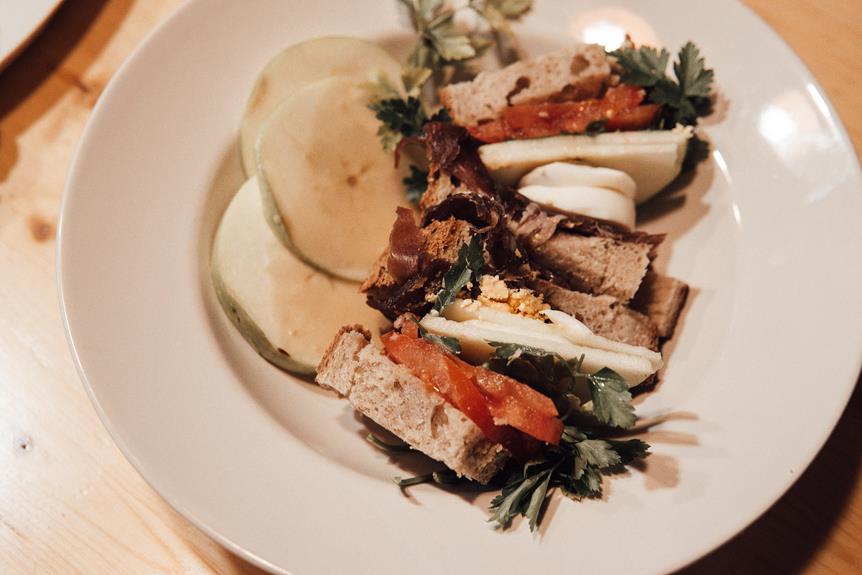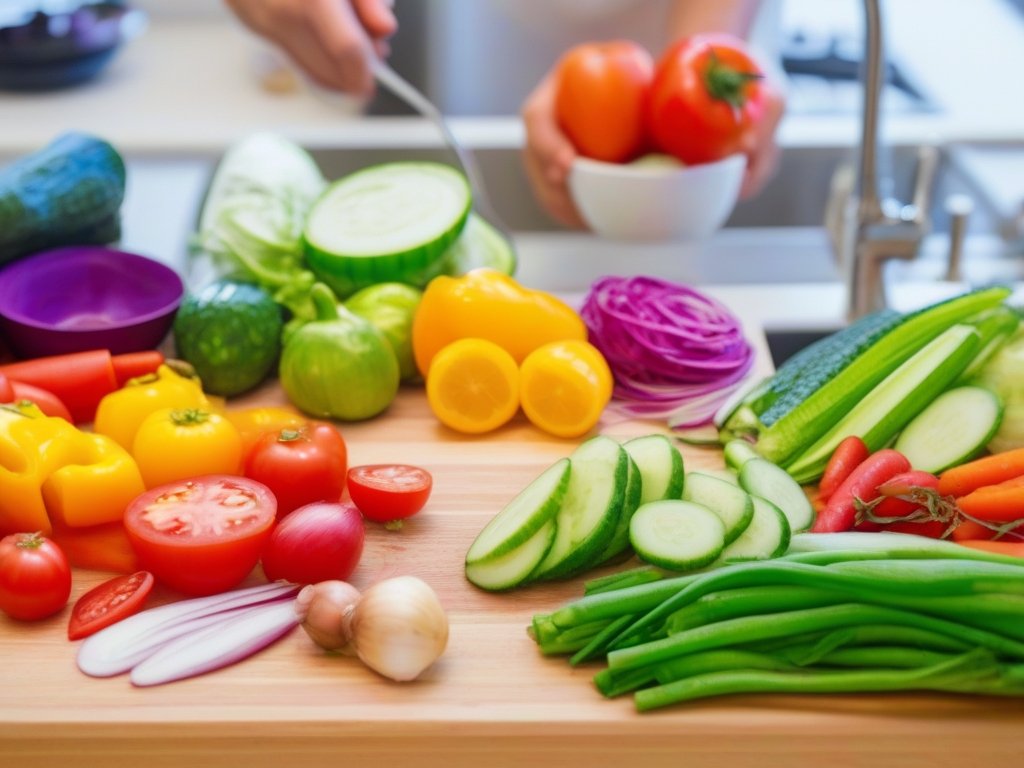What Should a Picky Eater Eat to Lose Weight-2024
DATE : 15 August 2024 By : Tareq Qteshat

Table of Contents
ToggleWhat Should a Picky Eater Eat to Lose Weight?
As a picky eater, you can still achieve your weight loss goals by focusing on nutrient-dense foods that cater to your tastes. Start with protein-rich options like lean meats, fish alternatives, and whole grains, which can help you build muscle and feel fuller for longer. Incorporate wholesome sides like quinoa, sweet potatoes, and steamed vegetables to create a well-rounded meal. Don’t forget to vary your protein sources to guarantee getting all essential amino acids. By making these smart food choices, you’ll be on the right track to weight loss – and there’s more to explore to help you reach your goals.
Key Takeaways
- Incorporate high-protein foods like lean meats, fish, tofu, and legumes to build muscle and reduce hunger.
- Choose whole grains like quinoa, brown rice, and whole-wheat bread for fiber and nutrient-dense calories.
- Eat a variety of colorful fruits, including tropical and exotic options, for fiber, vitamins, and antioxidants.
- Opt for low-calorie snacks like whole-grain crackers, avocado, and hummus to curb cravings and provide satisfaction.
- Include healthy fats like avocado, nuts, and olive oil to boost satiety, digestion, and nutrient absorption.
Focus on Protein Sources
Your weight loss goals are directly impacted by the types of protein sources you include in your diet. As a picky eater, it’s imperative to focus on protein sources that aren’t only nutritious but also appealing to your taste buds.
When it comes to protein, you have various options beyond meat. Fish alternatives like tofu, tempeh, and seitan can be great sources of protein. These alternatives aren’t only lower in saturated fat but also rich in fiber and vitamins.
In fact, incorporating high-protein recipes into your diet is key for building muscle, and you can find a variety of protein sources, including grilled chicken, salmon, lean beef, and tofu, in healthy recipes.
Additionally, wholesome sides like quinoa, sweet potatoes, and steamed vegetables can create a well-rounded meal.
Poultry portions are another essential aspect to take into account. Opt for leaner cuts of poultry like chicken breast or turkey breast, and aim for 3-4 ounce portions per serving. This will help you meet your daily protein needs without overdoing it on calories.
Additionally, vary your protein sources to guarantee you’re getting all the essential amino acids your body needs. Experiment with different cooking methods and seasonings to make protein-rich foods more enjoyable.
Whole Grains for Weight Loss
While protein sources are essential for weight loss, whole grains play a crucial role in complementing protein-rich foods and supporting overall weight loss goals.
As a picky eater, you may not be aware of the numerous whole grain alternatives available that can help you achieve your weight loss objectives. Ancient grains, such as quinoa, farro, and bulgur, offer numerous benefits, including higher fiber and nutrient content compared to refined grains.
For example, incorporating healthy recipes, such as Crispy Carrot Fries, into your diet can help you feel fuller for longer, reducing the likelihood of overeating and supporting weight loss. Additionally, involving your child in the cooking process, as mentioned in Tips for Parents, can also encourage healthy eating habits and support weight loss.
Whole grains also contain more fiber, which can help slow down digestion and prevent spikes in blood sugar levels. When choosing whole grain alternatives, opt for products that are labeled as “100% whole grain” or “100% whole wheat” to guarantee you’re getting the most nutritional benefits.
Some whole grain alternatives you may not know about include amaranth, kamut, and spelt. These options can be incorporated into your meals and snacks, such as substituting quinoa for rice or choosing whole-grain crackers over regular ones. Experimenting with these options can add variety and help support your weight loss journey.
Fruits That Support Diet
Certain fruits are more effective at supporting weight loss than others, due to their high water content, fiber, and antioxidant properties. These properties help you feel full, reduce inflammation, and boost your metabolism.
When choosing fruits, opt for those that are rich in these nutrients. You can also incorporate healthy fats like avocados Healthy Fats and Oils into your diet to support weight loss. Additionally, sneaking in veggies like finely chopped vegetables into dishes can increase nutrient levels in meals.
Incorporate tropical fruits like pineapple, mango, and papaya into your diet. These fruits are high in water content, which helps with satiety and hydration. They’re also rich in fiber, vitamins, and minerals that support weight loss.
Exotic berries like acai, goji, and maqui are also excellent choices. These berries are packed with antioxidants, fiber, and healthy fats that help regulate your appetite and metabolism.
Eat a variety of fruits to guarantee you’re getting a range of nutrients. Aim for 2-3 servings of fruit per day, and choose seasonal and locally sourced options whenever possible.
Be mindful of portion sizes, as even healthy fruits can lead to weight gain if consumed in excess. By incorporating these fruits into your diet, you’ll be supporting your weight loss journey and nourishing your body with essential nutrients.
Low-Calorie Snacks for Picky Eaters
Snacking is a key aspect of any diet, but it can be especially challenging for picky eaters who struggle to find low-calorie options that appeal to their taste buds. You don’t have to sacrifice flavor for nutrition, though.
Look for low-calorie crackers made with wholesome ingredients like whole grains, seeds, and nuts. These can be paired with a variety of toppings, such as avocado, hummus, or peanut butter, to keep your snacks interesting and satisfying. For example, incorporating hidden vegetables into your snacks can increase your nutrient intake without compromising on taste.
Additionally, getting creative with presentation, such as making fruit kebabs, can make healthy snacking more enjoyable. If you have a sweet tooth, don’t worry – you can still indulge in sweet treats without derailing your diet. Sugar-free cookies made with natural sweeteners like stevia or erythritol can be a great option.
Just be mindful of portion sizes, as even sugar-free treats can be high in calories if you overdo it. When shopping for low-calorie snacks, read labels carefully and choose options that are low in added sugars, salt, and unhealthy fats. By making informed choices, you can enjoy snacking while still working towards your weight loss goals.
With a little creativity and experimentation, you can find healthy snack options that you’ll actually enjoy
Healthy Fats for Weight Management
When it comes to weight management, you may think that all fats are created equal, but that’s not the case. Healthy fats, in particular, play a vital role in weight loss and overall well-being. These fats not only provide sustained energy but also help you feel full and satisfied, making it easier to stick to your diet.
| Food | Avocado Benefits | Nutritional Value |
|---|---|---|
| Avocado | Rich in healthy fats, fiber, and various essential vitamins and minerals | 1 medium: 322 calories, 10g fat, 10g fiber |
| Almonds | Rich in healthy fats, protein, and fiber | 1 ounce: 161 calories, 14g fat, 6g protein |
| Olive Oil | Rich in healthy fats, antioxidants, and anti-inflammatory compounds | 1 tablespoon: 120 calories, 14g fat, 0g carbs |
Incorporating healthy fats like avocado, nut oils, and olive oil into your diet can have numerous benefits for weight management. Avocado benefits include improved digestion, increased satiety, and enhanced nutrient absorption. Nut oils, such as almond and walnut oil, are rich in healthy fats and antioxidants, making them an excellent addition to your meals. By including these healthy fats in your diet, you’ll be well on your way to achieving your weight loss goals.
Frequently Asked Questions
Can I Still Eat My Favorite Junk Foods in Moderation?
You can still enjoy your favorite junk foods in moderation, but consider them as mindful indulgences, not staples. Balance them with healthy treats and nutrient-dense foods to maintain a liberating, guilt-free relationship with food.
How Many Calories Should I Consume Daily for Weight Loss?
To achieve weight loss, you’ll want to calculate your daily caloric needs and create a caloric deficit. Macro counting can help you track your intake. Aim for a deficit of 500-1000 calories per day for safe and sustainable weight loss.
What if I’m Allergic to Certain Protein Sources Like Nuts?
Imagine being a bird with clipped wings, yearning to soar. If you’re allergic to nuts, don’t worry! You can still fly high with seeds alternatives like chia, hemp, or flax. Explore fish options like salmon or tilapia for a fin-tastic protein boost.
Can I Drink Diet Soda While Trying to Lose Weight?
When cutting calories, you’ll want to reassess diet soda. Although it’s low in calories, diet soda’s artificial sweeteners can confuse your body’s natural ability to regulate calorie intake, leading you to seek more sweets.
How Long Will It Take to See Noticeable Weight Loss Results?
You’ll see noticeable weight loss results in 4-6 weeks with consistent effort, but metabolism boosters can speed up progress. Be prepared to overcome weight loss plateaus by adjusting your diet and exercise routine.
Conclusion
You’ve made it through the essentials of a weight loss diet as a picky eater. Now, it’s time to put it all together. Take Sarah, a 30-year-old who only eats chicken, brown rice, and apples. She started incorporating almonds as a healthy fat source and Greek yogurt as a protein-rich snack. By making these small changes, Sarah was able to lose 5 pounds in a month. You can achieve similar results by focusing on protein, whole grains, fruits, and healthy fats that you enjoy.
Tags: 10 healthy meals to lose weight for picky eaters, how to avoid picky eaters, how to feed a picky eater, how to lose weight, how to lose weight fast, how to lose weight for picky eaters, how to lose weight when you are a picky eater, picky eater, picky eater meal prep, picky eater tips, picky eater toddler, picky eaters, picky eaters gain weight, picky eaters kids, picky eaters try new food, picky eating, tips on losing weight for picky eaters, Weight Loss










